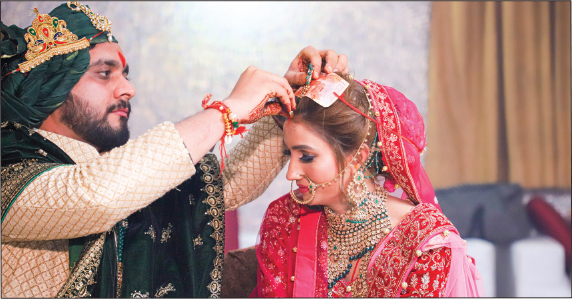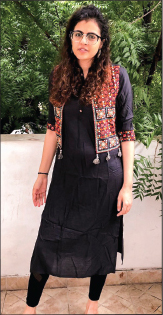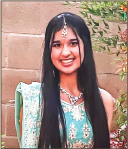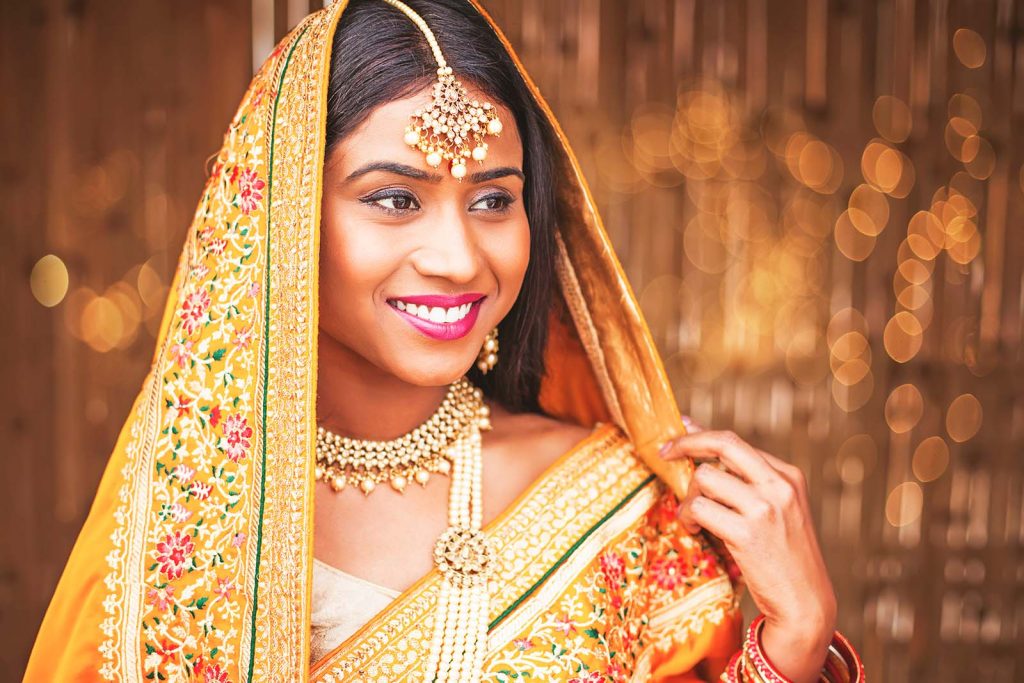Are they driven by religious beliefs, custom or societal forces?
By Shaina Grover, California
Throughout history, the role of women in society has constantly changed depending on the location, culture and time period. However, a recurring theme has been that, oftentimes, women would only be accorded the same rights as men much later, or not at all. Even in the United States, where “all men are created equal,” women did not have the right to vote until the 1920s.
There are certain stereotypes regarding different genders prevalent in today’s society ranging from something as simple as blue being associated with boys and pink with girls, to the idea that women should stay home and handle the house while the men go to work to provide for the family. Or the idea that it is better to have a son rather than a daughter to carry on the family legacy. To truly understand these ideas, we must consider whether these beliefs stem from our religious identities and cultural traditions or if they are a product of societal expectations.
When it comes to Hindu society, religion plays a significant role in people’s lives and plays a key role in their decisions, which is why questioning where these ideas originate is even more important.
Over the past few months, I had the opportunity to discuss gender stereotypes and Hindu culture with two people, each having a unique viewpoint. My first interview was with Anu Singh, 22, a unmarried Rice University graduate who plans on attending medical school soon. She amplifies the notion of identifying the “distinction between what is a societal problem and what is related to religion.” When it comes to Hinduism, she argues that there is a lot more representation for women in comparison to other cultures, pointing out that Hindus worship the Divine Mother (Devi). An example could be Navaratri, which occurs two times a year and is essentially nine days of celebrating the Divine Mother, with the last day being a ceremony to worship the daughters of the family. On the other hand, she agrees that there are issues in terms of gender stereotypes in Hindu society, but says we “cannot put the blame on Hinduism.” Furthermore, Singh mentions that prior to Mughal invasions in India, “women had a lot more rights.” When the Mughals invaded, they showed no mercy towards women and proceeded to mistreat them, resulting in severe actions taken to keep them “protected.” They were expected to have no public life, nor were they allowed to get a job. Unfortunately, these restrictions were not lifted even after the collapse of the Mughal empire, and their influence can still be seen today.

When considering how the treatment of women has evolved, she said, “Women today have a lot more opportunities compared to our grandparents. It wasn’t so common not long ago for a woman to go to a university or get a job. Society was different at that time and it was expected that a woman stayed home to take care of the children.” However, Singh’s grandparents both had college degrees and her grandmother also had a job as a teacher, which was not common at the time; but nowadays, more women have an opportunity to join the workforce.
A standard topic that pops up when discussing gender stereotypes in Hindu society is dowry. Singh says that the intention of the dowry was to ensure “that the girl should get her share of the parent’s property.” It wasn’t originally a bribe, but rather a way to make sure that the girl could live comfortably in her husband’s house. But, “this practice has degenerated and has led to some bad consequences.”
Essentially, Singh believes that viewing everything from a power dynamic and determining that there is an “oppressor” and an “oppressed” does not give a historically accurate account. In terms of the stories of the Gods and Goddesses, this type of lens does not portray the correct picture. Her belief is that it is not the fault of the religion but rather the social circumstances that have led to the different gender stereotypes present today.

My second interview was with Palak Malik, 35, a visual communication expert working for a Delhi-based creative agency. She is married and pursuing an advanced business degree. Malik shared, “The problem of gender stereotyping is deeply ingrained into society and has very much to do with the patriarchal structure, specifically in the environment I grew up in. It is difficult to break through these barriers even if you belong to a more educated family.” She says that there were some small restrictions that showed up in her life because of her gender, whether it was language, dress code or other aspects of her behavior. “It’s literally in your face all the time.” She notes that the men have always been “custodians” in charge of “enforcing the patriarchal structures,” and a woman’s dignity is attached to the reputation of the men in her family. As a result, women tend to follow at least some of the things being imposed upon them.
Malik believes that “Hinduism is a way of life and you are Hindu by being born in the religion,” which is why it’s difficult to identify what exactly the ideal Hindu person is, as the ideal is different per each one. For example, while her grandfather’s notion of Hinduism was intertwined with nationalism, her grandmother’s notion of Hinduism was more ritualistic.
Like Singh, Malik believes that the patriarchal structure of Hinduism is a huge societal issue that stretches beyond religion, citing the example of gender stereotypes and the wage gap in the workspace. Furthermore, Bollywood and the media normalize these gender stereotypes because they provide millions of people with the “male gaze.”

We discussed the idea of location impacting the different gender stereotypes. Malik has lived in Delhi for approximately 30 years and says that because she lives in Delhi, if she sees a man looking at her while she’s walking on the street, she will often assume that there is an intention to harm, simply because of where she lives. On the other hand, in Hyderabad or Mumbai, she knows that she can “go anywhere at any time alone and no one will bother her,… whereas in Delhi I have to think 5,000 times about whether or not I’m putting myself in danger.” It’s important to consider the fact that many women grow up in this kind of environment where they are scared to go out at night because of their gender, while men have more freedom. Moreover, when comparing her experiences as a member of a higher socioeconomic class to those in rural villages, she says that she “can’t even imagine the amount of gender stereotyping in rural areas.”
On the topic of dowry, she shares a statistic that even though the practice of dowry has been illegal since 1961, it is a part of 95% of marriages in India. “There are women who have to live in a pallu [end of sari draped over the head and partially covering the face] or ghunghat [a veil covering the face] for pretty much their entire life.”
In addition, Malik notes, even though women have more educational opportunities and there has been an increase in the participation of women in the workforce, many women still continue to drop out because of their “household responsibilities,” demonstrating that these gender stereotypes still exist. A key point that she makes is that “what is true in India, the exact opposite is also true.” For example, while some women may drop out of school, more and more are getting jobs. Or while there may be equality in one region, the next might have a more patriarchal structure. The roles of women and men have evolved as people move away from the idea that men cannot do work at home or only the woman has to make sacrifices to take care of the kids. The increase in access to information and this new digital age have paved the way for more freedom and equality. However, “there is still a ways to go before we get to some kind of real equality.”
In terms of the ritualistic portion of Hinduism, specifically with the visual aspect, when women are newly married, it is part of the culture that they wear a choora (set of bangles) to mark that they are taken and no longer single as if “everyone needs to know,” but there is no distinction for men. A married woman wears a bindi, sindoor in the part of her hair, etc., which creates a visual distinction between women that are married and those who are not, while there is nothing for men. Although there had been some cultural practices for men to indicate that they are married, those are not commonly seen today. For some, this may be a restriction on their freedom to express themselves through their clothing choices.
Malik pointed out that many women celebrate Karva Chauth, when they fast for the long life of their husbands. They conclude their fast by doing the arati of their husband and the Moon. Men on the other hand do not have to fast for their wives. Evidently, there is a distinction between what is expected of a Hindu woman and a man in a relationship. But, nowadays as people are more progressive, some men have also started fasting for their wives on Karva Chauth.
I personally believe that gender stereotyping is a huge societal issue that does not stem from religion. There may be some small examples of gender stereotypes or different expectations for men and women that can be found in Hindu religion as well, but there are also times when women are shown more respect than men in Hindu culture. In talking to some family members, I found that they have seen several examples of stereotyping with friends asking them why they didn’t want to have a son after having two daughters, but the environment they grew up in didn’t place any extra importance on the son in comparison to the daughter(s). Yet they all agree that gender stereotyping is more prevalent in society rather than religion. As more and more people adopt a modern way of thinking, there is more equality between men and women both in society and religion, even if there is still a long way to go before achieving true equality, regardless of where in the world you live.
About the Author

Born in Minnesota, Shaina Grover is a junior at Northwood High School in Irvine, California. She has an interest in STEM and enjoys traveling, dancing, reading and playing the violin. grover.shaina514@gmail.com
